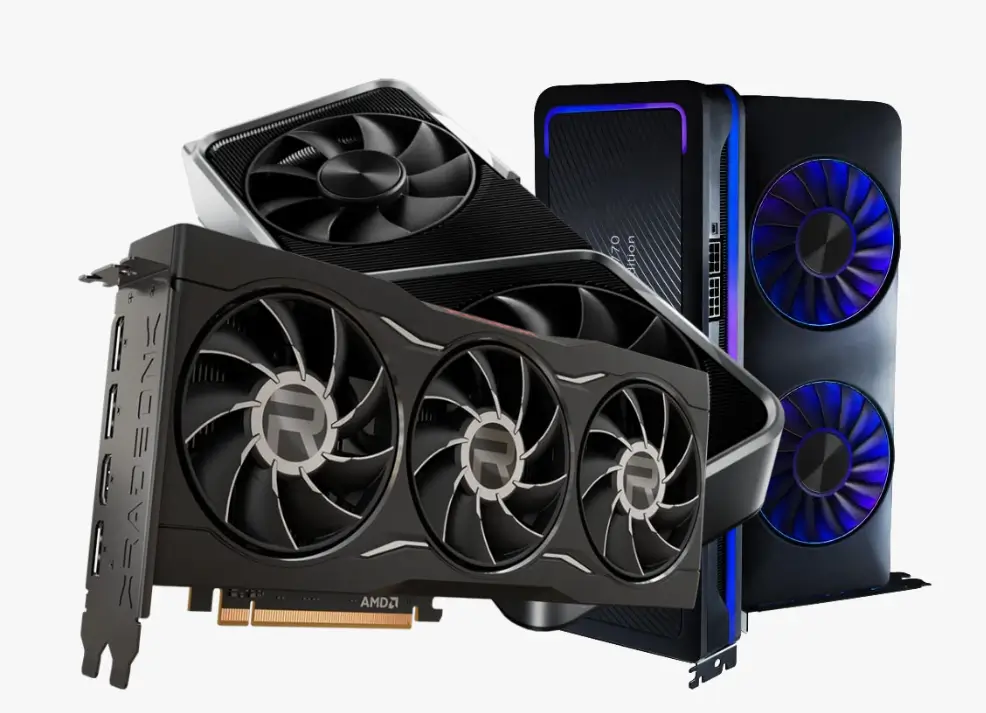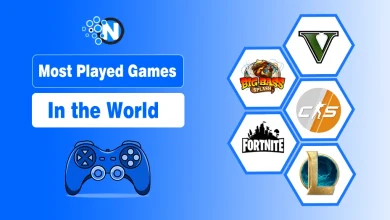Tips For Choosing the Right Graphics Card for Your Gaming PC

Gaming PCs are computers specifically designed to enhance the gaming experience for gaming enthusiasts. However, graphic cards are widely important because they can process the game faster and allow you quick responses.
In recent years, technological advancements have widely impacted industrial performance and enabled computer companies to grow and produce different kinds of graphic cards that can take your experience to another level of success.
Nevertheless, not everyone can deliver the desired outcomes. Therefore, I have enlisted the critical features you should consider when buying or choosing the right graphics card for your gaming PC.
Understanding the Graphics Card
Before moving ahead to the tips for choosing the right graphics cards for your gaming PC, you have to understand what a Graphic card is and which services or functions it performs.
Many confusing terms can help you learn about the graphic card in a more enhanced manner. I have detailed some of them in the under section.
- VRAM: VRAM exhibits the graphic card’s memory that it can use to store the textures and other data.
- Graphic Processing Unit: It is most commonly termed as GPU and is under the critical feature of a graphic card that can tender image processing. So that you can have the best results.
- Clock Speed: Clock speed is one of the best criteria to measure the speed of the graphic card. It will perform better if the speed is higher, and vice versa.
- TDP: The TDP stands for thermal design power and is a factor in measuring the heat consumption and dissipation within the Graphic Processing Unit.
Additionally, modern graphics cards feature specialized hardware for ray tracing, AI upscaling (like NVIDIA DLSS or AMD FSR), and encoding/decoding capabilities that can impact both gaming and content creation performance.
Tips for Choosing the Best Graphics Card for Gaming PC
Now, you have learned about the main components of a graphics card. In the following section, I have provided details on some critical tips and suggestions you can follow.

1. Understand Your Goals
Firstly, you must determine your gaming needs to buy a Graphics Card Processing Unit. If you are willing to run high-end games like AAA titles or others such as The Forza Horizon series or GTA V, then you must go for the right graphics card available on the market.
Consider these key factors:
- Target resolution (1080p, 1440p, or 4K)
- Desired frame rate (60, 144, or 240+ FPS)
- Support for features like ray tracing or VR
Moreover, you can consider ray tracing or VR processing alongside the frame rate and resolution to find the best pick. Understanding your goals will help you identify the performance level required from your graphics card
2. Set Good Budget
Secondly, you must be very accurate regarding your budget or the money you want to spend on high-end graphics cards for your gaming PC. Global inflation has caused a rapid increase in the pricing and costs of different gadgets, including computer accessories.
If you’re building a complete gaming PC, the graphics card should typically represent about 30-40% of your total budget. You’ll still need to allocate funds for other essential components like the CPU, RAM, storage, and power supply.
<strong><strong>A Good Rule of Thumb: </strong></strong>
For 1080p gaming, budget $200-400; for 1440p, $400-700; and for 4K gaming, $700+, though these ranges can fluctuate with market conditions.
3. Compatibility
Verify that your chosen graphics card will work with your existing or planned PC components. Compatibility issues can cause significant problems and prevent optimal performance.
Key compatibility factors include:
- Motherboard PCIe slot version and physical space
- Power supply wattage and available connectors
- Case dimensions and clearance
- Driver support for your operating system
Physical dimensions are particularly important, measure the available space in your case and check the card’s length, height, and thickness specifications before purchasing.
4. Compare Available Models
After understanding the goals, requirements, and budget, you must go one step further to find the best version or model of graphics cards available on the web. The market is dominated by two major GPU manufacturers:
- NVIDIA: Known for excellent driver support and features like DLSS and ray tracing. Have models like, NVIDIA GeForce RTX 5070 Ti, and NVIDIA GTX 970
- AMD: Often offers competitive price-to-performance ratios and more VRAM at similar price points
Within each manufacturer’s lineup, multiple board partners (ASUS, MSI, Gigabyte, etc.) offer various models with different cooling solutions, factory overclocks, and aesthetics.
Research customer reviews and professional benchmarks to evaluate performance in the specific games you want to play for a better way to choosing the right graphics card for you.
5. Balance Performance and Value
It is widely known that the higher input cost will bring better results. But, it is impossible to spare a large amount of money for such activities in this modern era. Accordingly, you must balance your interpretation and value. Consider these questions:
- Will you play primarily older titles or the latest AAA games?
- How long do you plan to keep this graphics card before upgrading?
- Are you willing to adjust in-game settings for better performance?
The best approach to do this activity is to decide whether you want to play the old games or the latest versions. If you wanna play old titles, then you do not have to purchase expensive graphics cards. On the other hand, you may go for them to play series like GTA V or Forza Horizon.
<strong>💡<strong><strong>Pro Tip:</strong></strong></strong>
The mid-range segment ($300-500) often provides the best value for most gamers with excellent performance without the premium price of flagship models.
6. Future Advantages
While it is not possible that the graphics card can run for a longer time, you must ensure that it can give you a better and sustainable working period. Thus, you can play your favorite game without getting any difficulty or glitches. You should consider,
- Cards with more VRAM than currently needed
- Models with strong support for emerging technologies
- Manufacturers with good track records for driver updates
Above all, you can search for customer support to find the one solution that can eliminate all the issues you face while gaming games.
Pay attention to power efficiency as well, more efficient cards not only save on electricity costs but often run cooler and quieter, extending their usable lifespan.
7. Cooling Solutions and Noise Levels
The cooling system on your graphics card significantly impacts both performance and user experience. Consider these factors when evaluating cooling solutions:
- Air Cooling vs. Liquid Cooling: Most cards use air cooling with fans, while some great model feature AIO (All-In-One) liquid cooling for better thermal performance.
- Fan Configuration: Cards with larger or multiple fans offer better cooling but require more space.
- Noise Levels: If you value a quiet gaming environment, look for models with fan-stop technology that keeps fans idle during light workloads.
- Thermal Design: Cards with larger heatsinks and better thermal pads generally maintain lower temperatures under load, which can extend the lifespan of the GPU and prevent thermal throttling.
<strong>Subject</strong>: ………………………………
💡Remember: Better cooling often translates to better sustained performance, as modern GPUs will automatically reduce their clock speeds if they reach temperature limits.
8. Consider Used or Previous Generation Options
For budget-conscious gamers, the used market or previous-generation graphics cards can offer excellent value:
- Previous Generation Flagships: Last generation’s cards often outperform current mid-range options and can be available at competitive prices.
- Refurbished Options: Manufacturer-refurbished cards typically come with warranties and have been tested for reliability.
- Mining Cards: Be cautious with cards previously used for cryptocurrency mining, as extended operation at high loads can reduce lifespan.
- Price-to-Performance Research: Compare benchmarks of older high-end cards against newer mid-range options to identify the best value proposition.
- Driver Support Longevity: Check how long manufacturers typically provide driver updates for their cards to ensure continued compatibility with new games.
When buying used, request proof of purchase date if possible, test the card thoroughly within the return period, and check for physical damage or signs of overheating.
Final Verdicts
Choosing the right graphics card for your gaming PC is a challenging task and requires careful consideration of different factors, strategies, and tips. Not everyone can have his hand on the best option available on the market because of so many choices.
Therefore, I have created a list of some critical points that will surely lead you to find the best card available for your gaming PC. The only requirement is to check factors like compatibility and budget so that you avoid breaking the bank to fulfill your interests and desires.




